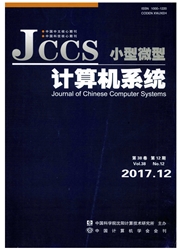
欢迎您!东篱公司
退出

 中文摘要:
中文摘要:
和硬盘相似,基于MEMS的存储设备读写数据时也采用伺服来定位.在分析MEMS存储设备固有特点的基础上,以硬盘的伺服原理为基础,提出了几种可行的伺服方式,分析并比较了各种伺服方式对数据布局、通道设计、服务时间和空间利用率的影响.结果表明,合适的伺服可以大幅度提高MEMS存储设备的性能.
 英文摘要:
英文摘要:
MEMS-Based storage is the next generation second level storage for computer. It differs from HDD dramatically, but has something in common that they both need servo in order to stay steady at the target track. Borrowing the servo method from HDD is not enough. In this paper, we introduce some new servo methods, and analyze their impressions on data organization, service time, capacity utilization rate and etc. The results show that appropriate servo can improve the performance of MEMS storage devices.
 同期刊论文项目
同期刊论文项目
 同项目期刊论文
同项目期刊论文
 期刊信息
期刊信息
